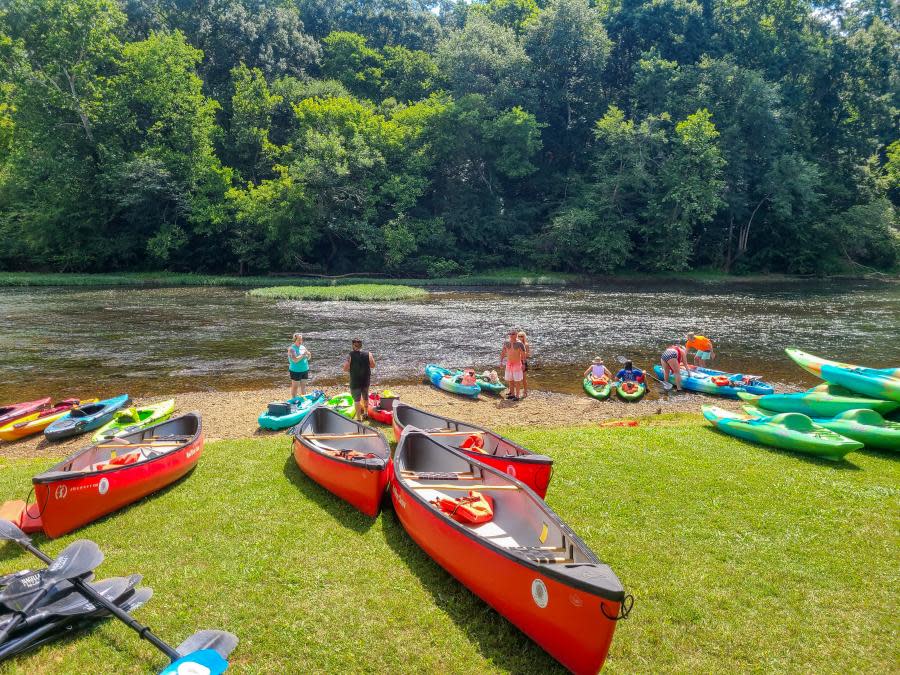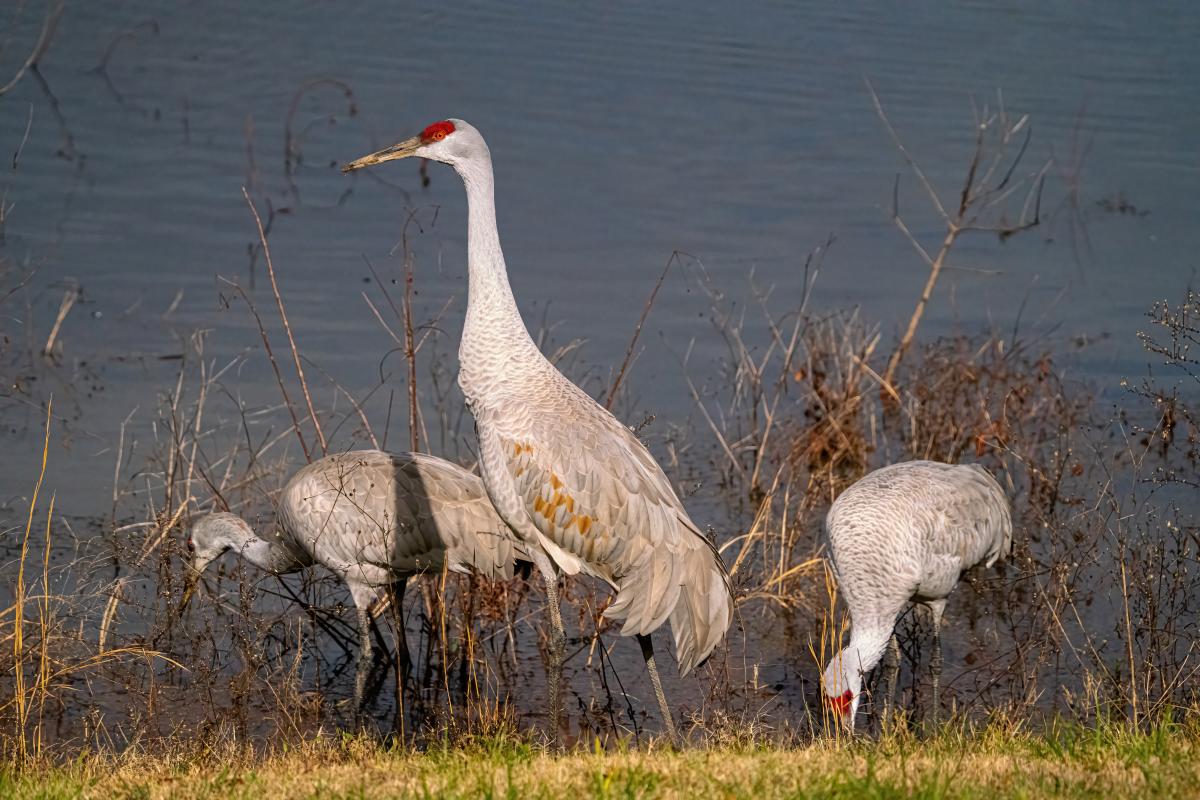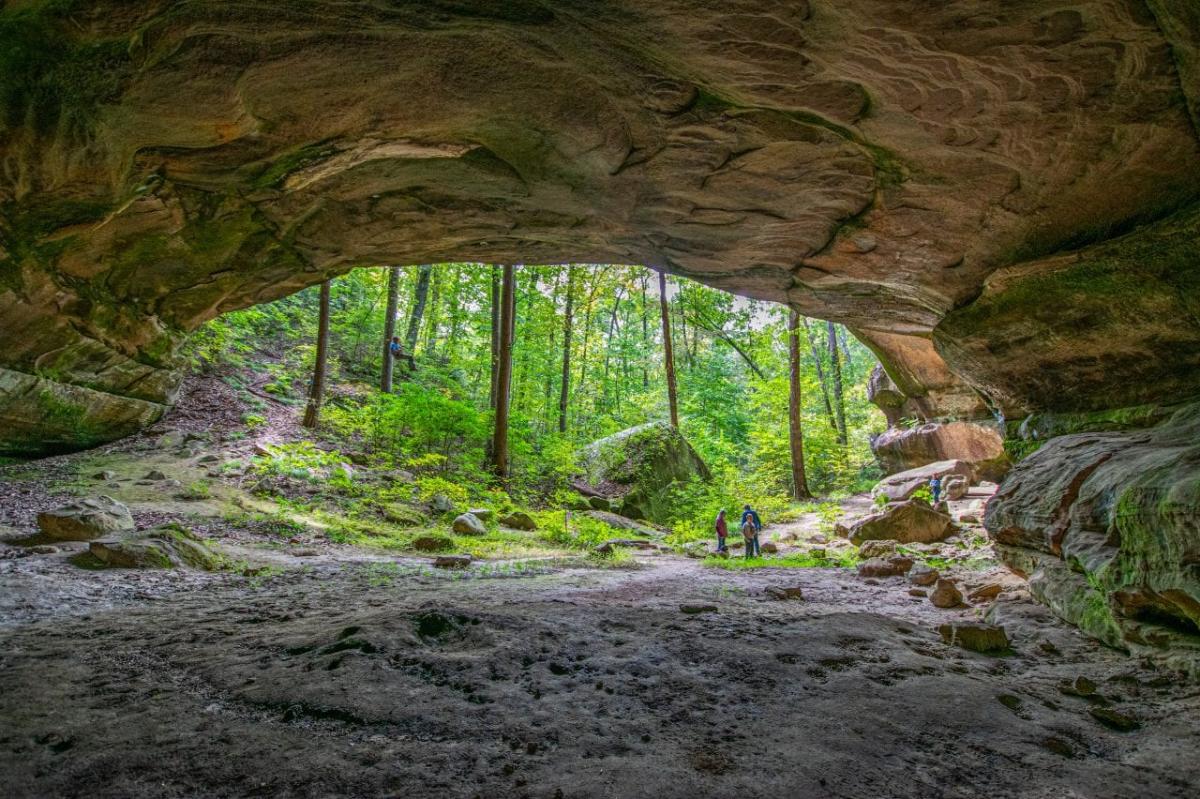Did you know North Alabama is home to the first designated wilderness east of the Mississippi? It also has the longest commercially supported stretch of paddling in Alabama, 30,000 migrating sandhill cranes, and the miracle mile of bass fishing. There is also the 'Grand Canyon of the East', glow worms that are close cousins to what you'd find in Australia and New Zealand, and a state park with cabins less than ten miles away from the birthplace of the US Space Program. Join us as we show you seven natural places you need to know in North Alabama.
Little River Canyon
Our natural tour of North Alabama begins in Little River Canyon, known by many as the 'Grand Canyon of the East'. The Little River flows along the middle of Lookout Mountain to its confluence with the Coosa River at Weiss Lake. This is the same Lookout Mountain where you'll find famous tourist attractions like Ruby Falls and Rock City near Chattanooga. Luckily for Alabama, the river carved nearly 65 miles of canyons into the Cumberland Plateau when you include the major side canyons.
There's something to do in every season in the Little River Canyon National Preserve and De Soto State Park. From early winter into May, the canyon is home to the finest white water in Alabama. For the less adventurous or more sane, this is also when you'd want to take a waterfall road trip to see the state's largest waterfall (DeSoto Falls) and the impressive Little River Falls. During the summer, you can rent a kayak and paddle the flat water above DeSoto Falls or go for a swim at the ever-popular Hippy Hole. Autumn brings fall colors at their finest, especially on the Little River Canyon Rim Parkway, which might just be the best scenic drive in Alabama.

Lake Guntersville
Lake Guntersville is Alabama's largest lake and home to many championship bass fishing tournaments. Some people theorize that the weigh-in and subsequent release of trophy bass from these tournaments create the famed "Miracle Mile" of bass fishing near the Goose Pond Colony. One thing is for sure; Lake Guntersville has a lot of fish. Perhaps that's why it's home to so many bald eagles.
What we love about Lake Guntersville isn't its massive size but rather kayaking in the quiet secret spots you can find along the lake. Some of our favorite paddles around Scottsboro include launching from the incredibly well-priced cabins at Jackson County Park, exploring the caves in Coon Bay, observing bat flights from Hambrick Cave, and floating in the backwater arms around Lake Guntersville State Park.

Flint River
Some people cruise the 15 river miles between Lake Guntersville Lock and Dam (MM 349) and Ditto Landing (MM 334) on a pontoon boat. However, since we're paddling fans, our favorite water in the area is the Flint River which enters five miles above Ditto Landing. We love taking the 5-mile paddle around Hobbs Island, but we love the 50 miles of navigable water on the Flint River even more. With three separate outfitters supporting the Flint River from the Bloucher Ford Preserve to Hwy 231, this is the state's longest commercially supported stretch of paddling.
Brown Bear Canoe and Kayak operates from Bloucher Ford Preserve to Ryland Pike. North Alabama Canoe and Kayak (NACK) services the river from Ryland Pike to Little Cove Road. Last but not least, Flint River Expeditions runs from Little Cove Road to Hwy 231. It's hard to pick our favorite because they all run excellent operations. We love the challenge of running the upper Flint after a hard rain, the beauty of the bluffs at Sublett Point, and floating through the Hayes Nature Preserve.

Monte Sano
Monte Sano (1621') is 800 feet shorter than Mount Cheaha (2413'). Monte Sano State Park's area (2,140 acres) is only a fraction of Oak Mountain's (9,940 acres). However, all of it is used masterfully with 14 cabins, 89 camping spots, and 20 miles of hiking trails. When you include the adjacent 1,107 acres of the Monte Sano Nature Preserve with its own 22 miles of trails and the proximity to Huntsville, you get one of the premier natural areas of North Alabama.
Exactly how close is Monte Sano to downtown Huntsville? Close enough that riding from Big Springs Park to Monte Sano is one of the most popular bike routes in Huntsville. It's also the longest sustained climb in the state, but all at a very manageable grade. Not only are the combined 40 miles of trails excellent for hiking, but they're also almost all suitable for mountain biking too. Plus, it's eight degrees cooler on the shady mountain top but still close enough to venture down into the valley to visit the US Space and Rocket Center, which is only ten miles away. While you’re out, you can also grab a dish at one of the delicious local Huntsville restaurants.

Wheeler National Wildlife Refuge
Wheeler National Wildlife Refuge is a sprawling 35,000-acre preserve near Decatur. For math fans, it's over 3X the size of the largest state park that Birmingham claims and is located in the heart of North Alabama. With so much area and diversity, it has a little of everything, including gravel rides, kayaking with alligators, caves, and paddling trails. However, the park might be most famous for bird watching.
A total of 300 species of birds visit Wheeler, but none are more celebrated than the cranes that come calling in December and January. Tens of thousands of Sandhill Cranes and a handful of Whooping Cranes stop by the park for their winter migrations. While this isn't the hundreds of thousands of cranes that descend on the 80-mile Platte River, their density and the excellent viewing area makes this one of the premier wildlife watching experiences in America. The sights and sounds of cranes are everywhere, so much so that there's even a weekend-long Festival of the Cranes that celebrates their visit.

Bankhead National Forest
If you thought the 35,000-acre Wheeler NWR was large, the Bankhead National Forest covers 181,230 acres in Northern Alabama. It is home to Alabama's only National Wild and Scenic River, the Sipsey Fork, and the first designated wilderness east of the Mississippi, the Sipsey Wilderness. Within its boundaries, you'll find rock shelters, petroglyphs, and over 90 miles of hiking trails, but the waterfalls steal the show.
It's known as the 'land of a thousand waterfalls,' and that number might be low during the spring runoff. Whether you're paddling the Sipsey, hiking to a remote cascade, or simply taking a driving tour, you're sure to find your falls in the Bankhead National Forest. Also, don’t forget to check out one or more of the natural bridges in and around the park.

Dismals Canyon
Dismals Canyon National Landmark isn't extraordinary because of its size. There's only a 1.5-mile trail through the canyon on 85 acres. It takes less than 10,000 steps to traverse the entire canyon and return to the soda fountain at the park. However, those might be the most diverse 10,000 steps you'll take in the Southeast.
The sandstone canyon winds through waterfalls and primeval forests with rare and unusual flora and fauna everywhere and every season—however, the undisputed superstars of the canyon fly larvae called Dismalites. What makes the Dismalites special is that they are photoluminescent larva like you'd find in the caves of Australia or New Zealand. The Dismals Canyon website says- "When looking up at the moss-covered canyon walls, it's hard to tell where the Dismalites stop and the stars begin. When enough are present, they appear to form constellations."

Wrapping up Natural Places in North Alabama
If you're lucky enough to call North Alabama home, you know that these seven places are just the beginning of the natural beauty in North Alabama. You might have to plan multiple trips to see them all if you're only visiting, and by the time you're done, you'll have discovered even more places to explore. There's almost no limit to the natural beauty and outdoor adventure in North Alabama, and no time better than now to start experiencing it for yourself.
